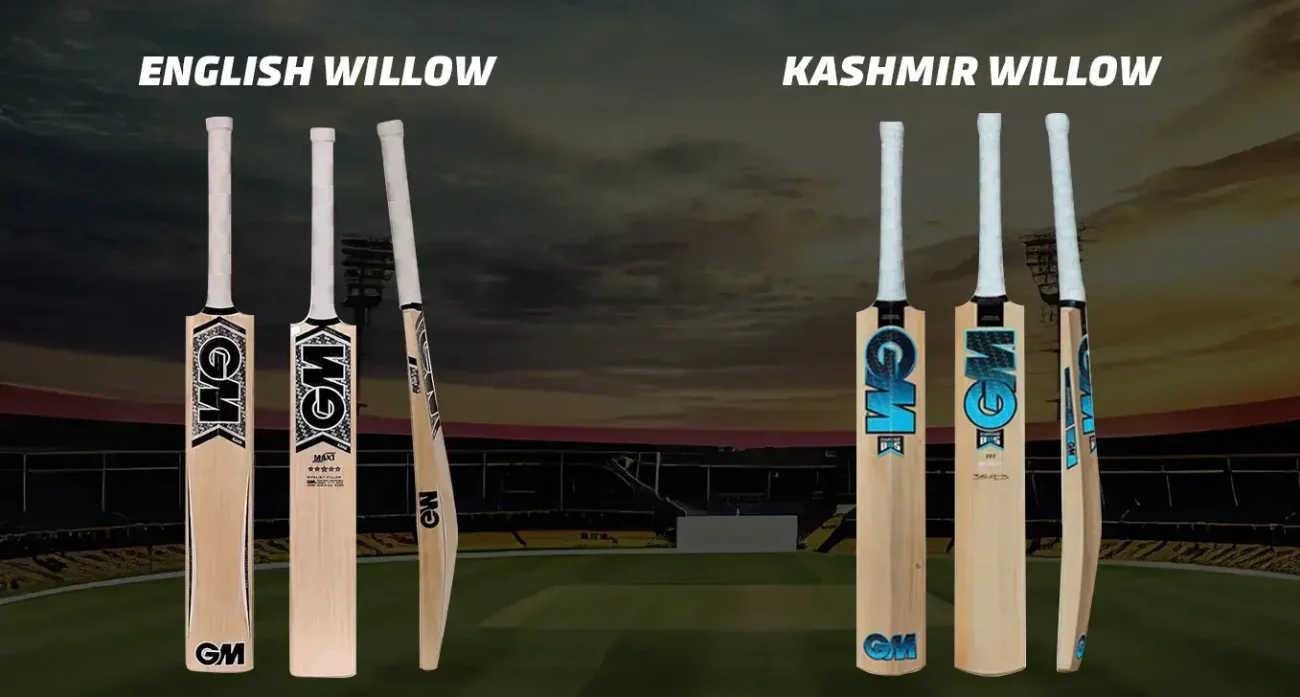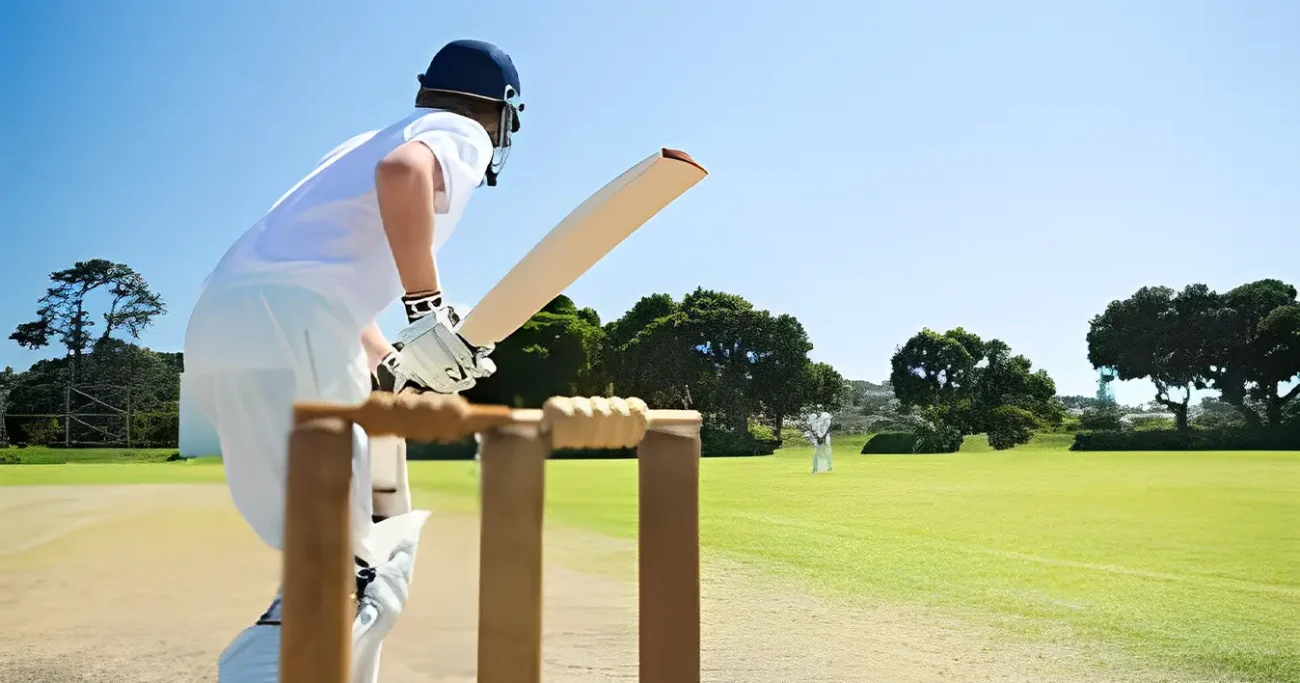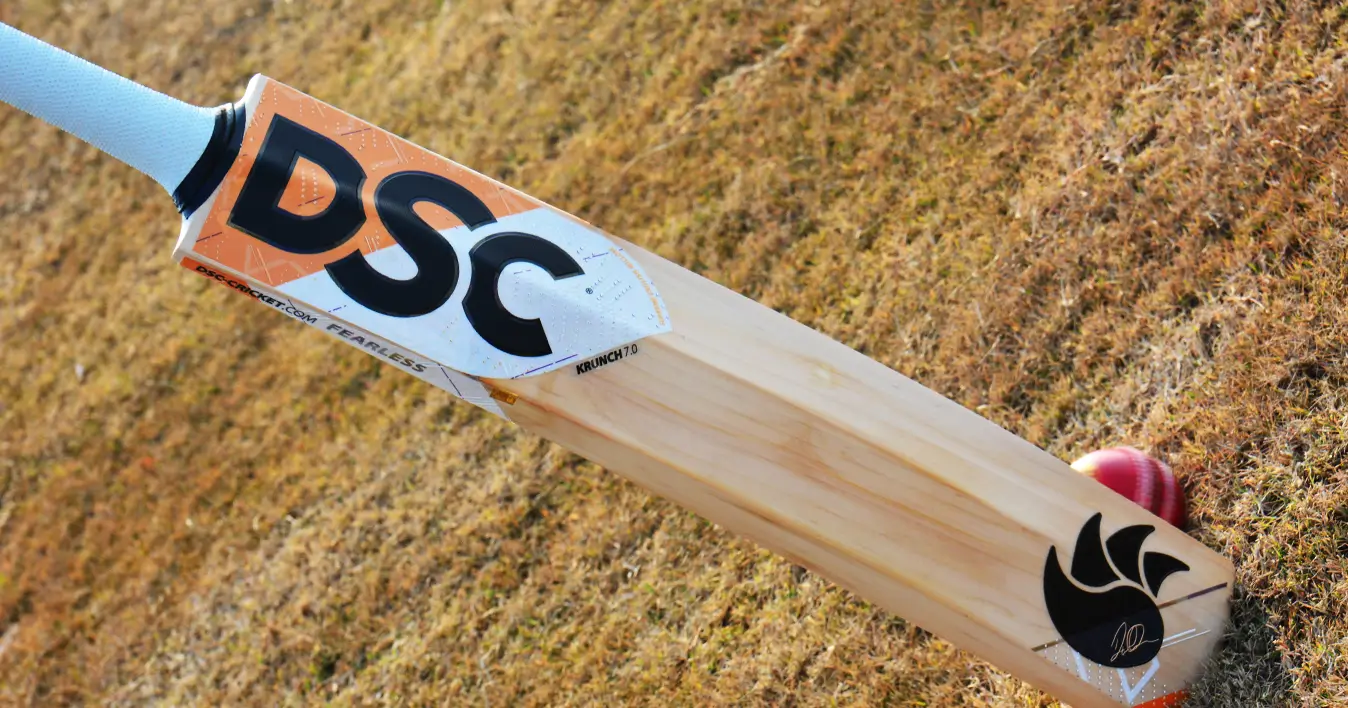Brief History of Cricket Bats: Cricket, a game with roots dating back to the 16th century, has transformed the tools used, especially the cricket bat.
Initially, the design resembled a hockey stick, curved to play the ball on the ground. However, as the game evolved and the rules changed, so did the bat.
Importance of Selecting The Right Bat
Selecting the proper cricket bat is the most crucial factor in determining a player’s strength on the field. The weight, balance, size, and materials may considerably impact a batter’s performance.
The right bat may help a player’s inherent skills, while the wrong one can hurt them.
Evolution of The Cricket Bat
The Transition from Hockey-stick Shaped Bats to Versions with Flat Fronts: Players could play a greater variety of strokes and adjust to the changing nature of the game because of the change from the curved shape to the flat-fronted bat.
Timeline of Significant Changes And Modifications
- Pre-18th century: Early versions resembling hockey sticks.
- Late 18th century: Introduction of the flat-fronted design, making it easier to play the rising ball.
- 19th century: Bats became heavier and broader, allowing for more power in shots.
- 20th century: Introduction of protective coverings and the continued fine-tuning of design and balance.
Materials Used in Cricket Bats
Types of Wood: The primary wood used for cricket bats is willow. There are mainly two types:
- English Willow: Grown in the UK, this is often considered superior due to its lightweight and durable nature.
- Kashmir Willow: Grown in the northern regions of India, it’s slightly heavier and less durable but more affordable.

How The Type of Wood Affects Performance And Durability image
- English Willow
Produces a better ping or response when the ball hits the bat, which professionals prefer.
- Kashmir Willow
Offers decent performance at a lower cost, commonly used by amateur and intermediate players.
Different Parts of a Cricket Bat
- Blade
The main body of the bat that comes into contact with the ball. Its profile, or shape, can affect shots’ weight distribution and power.
- Handle
Connect the blade to the batsman’s hands. Depending on the player’s height and preference, it can be short or long. A rubber grip is usually wrapped around for better control.
- Toe
The bottom part of the bat. A strong toe is essential for durability, especially when playing on damp pitches.
- Spine
The raised ridge runs down the back of the blade. A pronounced spine offers more power and a larger sweet spot.
- Edge
The side of the bat. Bats nowadays have thicker edges, allowing for more powerful shots even if the ball doesn’t hit the center.
- Sweet Spot
The region of the blade where the ball is struck with the most force and the least amount of vibration. Depending on the player’s style and the shape of the bat, it may be higher or lower.
In conclusion, the cricket bat has changed greatly throughout the years due to the modifications made to the game. For amateur or professional players, choosing the correct bat, comprehending the materials, and knowing how each component works are essential.

Types of Cricket Bats Based on Players And Game Formats
Bats for Test Matches vs. Limited Overs Games:
Test Matches:
Bats in test matches are typically heavier with a higher sweet spot, ideal for longer innings and shots off the back foot. They emphasize balance and endurance.
Limited Overs Games:
These bats are designed for aggressive play, often lighter with a lower sweet spot, suitable for front-foot shots and clearing the boundary.
Beginner Bats vs. Professional Bats:
Beginner Bats:
Beginner bats are often more affordable since they are made of less expensive materials like poplar or softer varieties of willow. They might not perform well, but they work well for learning the fundamentals.
Professional Bats:
Crafted from premium-quality English or Kashmir willow, these bats provide optimal performance durability and are used by advanced players and professionals.
Kids and Women-specific Bats:
Both kids and women-specific bats are designed to be lighter and come in various sizes suitable for different age groups or heights.
The bats are crafted considering the physical dynamics and playing styles of kids and women, ensuring ease of use and optimal performance.
Importance of Bat Weight And Balance
The balance and weight of a bat may have a big impact on a player’s stroke performance. Others want lighter bats for greater control and quick wrist play, while some prefer heavier ones for powerful strokes.
The balance controls how the weight is distributed across the bat, which affects how simple it is to make shots.
Handles might be oval or circular, among other shapes. Round handles are frequently chosen by players who employ a lot of wrist movement in their shots, whereas oval handles give a stronger grip and more control for the top hand.
Toe Guards, Face Tapes, and Other Bat Accessories:
- Toe Guards: Protect the toe from damage, especially from yorkers or damp conditions.
- Face Tapes: Shield the bat face from surface cracks or minor damages, thus prolonging its life.
- Other Accessories: Anti-scuff sheets, extra grips, and rubber inserts can enhance a bat’s longevity and performance.

Taking Care of Your Cricket Bat
The Importance of “Knocking-In” a Bat Before Its First Use: “Knocking-in” prepares a new bat for play by hardening the blade’s surface. It involves striking the bat with a special mallet, ensuring the fibres compress and the bat doesn’t damage easily when used in a game.
Oil Application for Bat Longevity:
Raw linseed oil is often applied to maintain the bat’s moisture levels. This prevents it from drying out and becoming brittle. However, over-oiling can soften the bat, reducing its lifespan.
Storing Your Bat: Do’s and Don’ts
- Do’s: Store in a cool, dry place. Keep it horizontal, especially if it’s oiled.
- Don’ts: Avoid damp or extremely hot conditions. Don’t place it near radiators or direct sunlight.
Signs That It’s Time to Replace Your Bat
- Deep cracks that affect performance.
- A dead or hollow sound when striking the ball.
- Severely damaged toe or edges.
- Loose handle or compromised structural integrity.
A cricket bat is more than simply a piece of gear—it is the batsman’s extension. Players may get the most out of their bats and fully enjoy the game if they make the right choices, customize them, and take care of them.
Bat Weight And Its Effect on Shots
- Lighter bats improve mobility and are appropriate for athletes who want to use time over pure strength. Ideal for wristy shoots that are rapid.
- Heavier bats are frequently picked by players who play aggressive strokes because they have higher power. While handling them may take more muscle, they can easily produce lofted shots.
Recognizing The Right Number of Grains
A bat with more grains (7 or more) is generally mature, offering immediate performance, but may lack longevity.
Conversely, fewer grains (6 or less) suggest the willow is younger, may require more time to play in, but can be more durable.
Importance of Trying Multiple Bats Before Finalizing
Each bat, even of the same model and brand, can feel different. Always try out multiple bats, checking their pick-up, balance, and comfort in your stance and shots before making a final choice.
Popular Cricket Bat Brands And Their Specialty
- Gray-Nicolls: Renowned for its classic design and consistently high performance. Their bats often boast a perfect combination of power and finesse.
- Kookaburra: Known for innovative shapes and durability. They often incorporate spine designs that extend into the toe, maximizing power.
- SG: Popular, especially in the Indian subcontinent, SG bats are recognized for their balance and impressive stroke play.
- Yashi: With a reputation for technological innovation, Yashi bats have advanced manufacturing techniques, ensuring durability and performance.
How to Knock in a Cricket Bat?
- Use a Special Bat Mallet: Start gently tapping the bat’s edges and working toward the center. Never use a cricket ball for this.
- Gradual Increase in Force: As you continue, increase the force. This process helps in compressing the fibres in the bat.
- Bat in Nets with an Old Ball: Practice using an old cricket ball in the nets after initial knocking with a mallet. This helps the bat adjust to real-game scenarios.
- Duration: Spend at least 6 hours for the entire knocking-in process, though some bats may require more time.
Takeaway
Understanding personal style, identifying quality indications, and keeping up with companies and their products are all necessary for choosing the ideal cricket bat.
A batsman’s relationship with their bat is sacred; it echoes their game’s rhythm and enhances their skill.
The journey of the cricket bat promises ongoing improvement as technology and craftsmanship advance, guaranteeing that players always have access to the greatest equipment.
Yashi Sports is the best choice if you’re seeking the ideal gear. Shop for a variety of sports cricket accessories in one place. Order now!
Knocking in a cricket bat typically requires at least 6 hours. However, the duration can vary based on the bat’s make and wood quality. Some bats may require up to 10 hours or more. Always refer to manufacturer guidelines if provided.
Even while a bat can be knocked in without being oiled, doing so is not advised. Instead, the bat should be lightly coated with raw linseed oil. To keep the wood from getting too dry and brittle during the knocking-in process, oiling helps preserve the moisture level.
No, you should not use a hammer. Instead, use a specialized cricket bat mallet. A hammer can cause uneven compression and might damage the bat.
Knocking-in a GM cricket bat follows the standard process. Begin with a special bat mallet, gently tapping the edges and working to the center.
Gradually increase the force as you go. Once initial knocking is done, practice using an old ball in the nets. Always check if GM provides specific guidelines for their bats.
Choosing a cricket bat depends on your playing style, physique, and personal preferences. Consider factors like weight, balance, size, sweet spot location, and number of grains. Test multiple bats for comfort, pick-up, and ease of play before finalizing your choice.
The difference lies in the quality of the willow. Grade 1 bats are made from the highest quality willow with straight grains, minimal blemishes, and no heartwood. They are often more expensive.
Grade 2 bats may have slight irregularities in grain structure and a few more blemishes but still offer good performance, usually at a lower price point.







